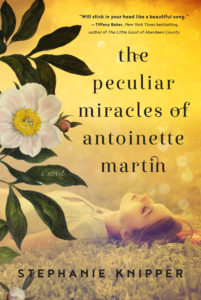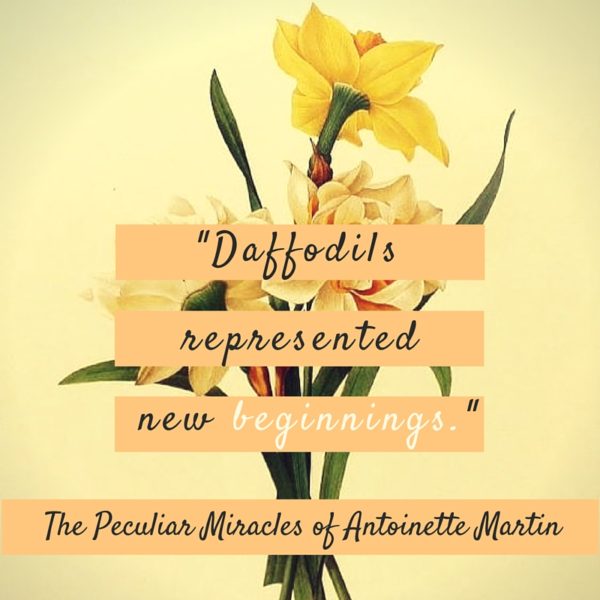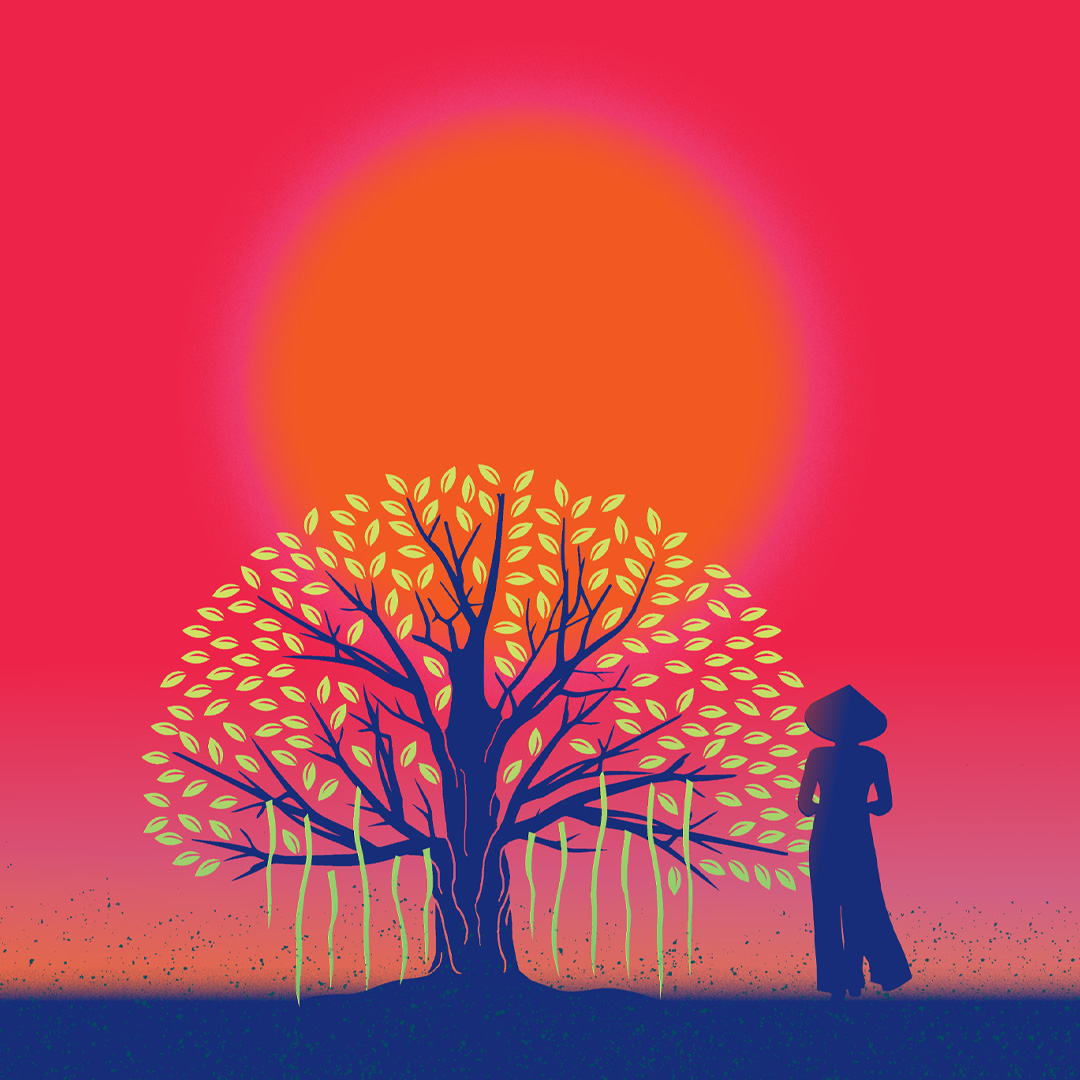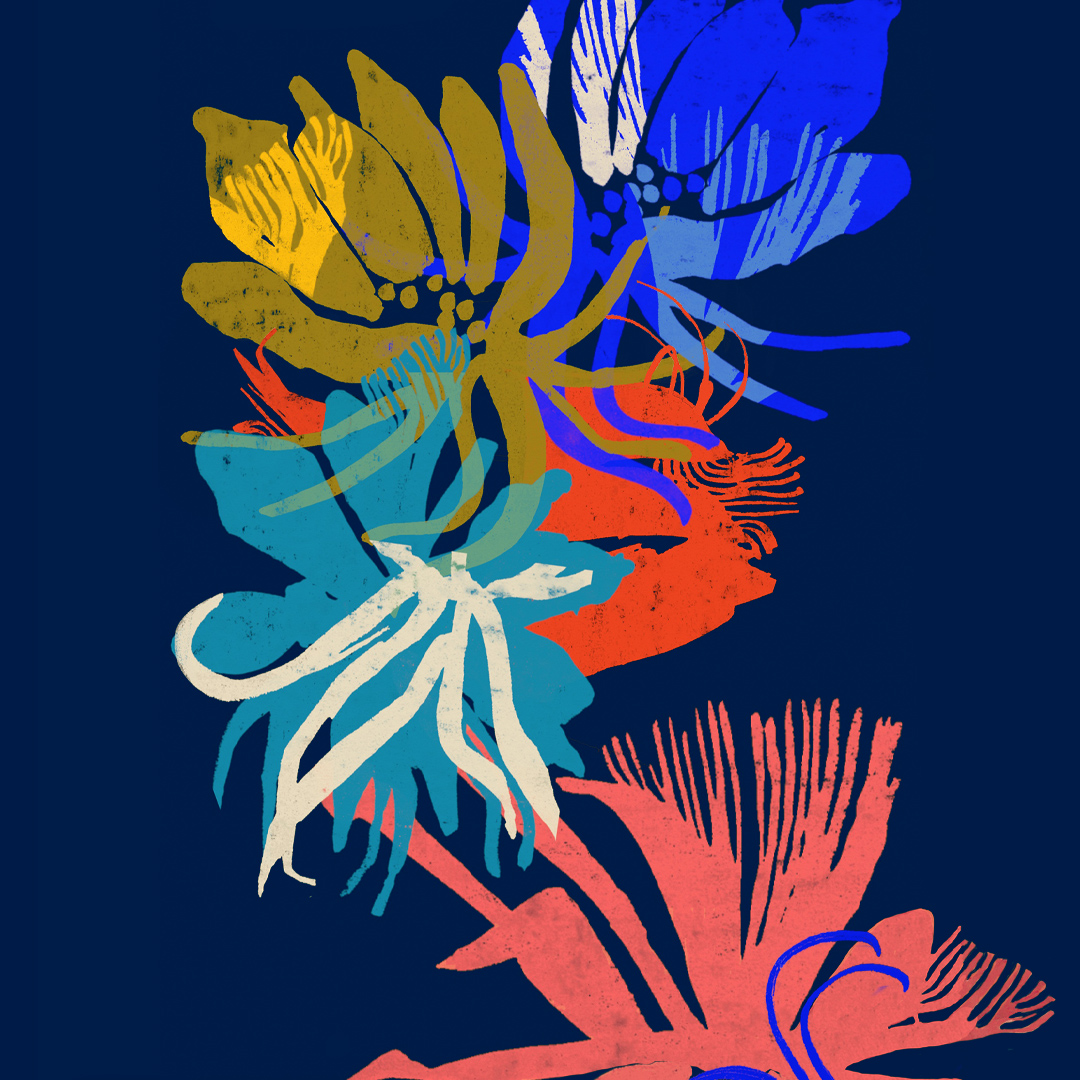Learn to Speak the Language of Flowers: Daffodils
 Ah, daffodils. Who among us literary-minded folk is not reminded of William Wordsworth’s dancing daffodils when spotting these golden flowers? As it turns out, their meaning in the Victorian language of flowers is just as joyous — and just as meaningful to the main characters in Stephanie Knipper’s The Peculiar Miracles of Antoinette Martin — new in paperback.
Ah, daffodils. Who among us literary-minded folk is not reminded of William Wordsworth’s dancing daffodils when spotting these golden flowers? As it turns out, their meaning in the Victorian language of flowers is just as joyous — and just as meaningful to the main characters in Stephanie Knipper’s The Peculiar Miracles of Antoinette Martin — new in paperback.
Rose yearns to be reunited with her sister Lily, though she worries that things have been left unspoken for far too long. She looks out the window of her home to the fields of her family’s commercial flower farm and imagines flowers bursting into bloom. Daffodils, for new beginnings. Coneflowers, for strength and health. And white tulips for forgiveness and remembrance. All flowers heralding what is to come for her.
When circumstances bring the sisters back together, they leave bouquets of flowers as secret messages for each other to decipher, a way of saying what cannot be said.
Daffodils, known as Narcissus in the plant world, are a common symbol of spring. Linked to the Narcissus of Greek myth, who fell in love with his own reflection, the daffodil is a perennial flower that regrows each year from a bulb. Daffodils are one of the few plants that are able to grow through snow. While previously a symbol of chivalry, today they are a sign of hope.
Click here to read more about The Peculiar Miracles of Antoinette Martin.





